Members of a population
Can interbreed and produce fertile offsprings
Share a common gene pool
Share or compete for similar resoruces
More than one option is correct
The correct Answer is:D
To understand the concept of members of a population, we can break it down into several key points:
1. Definition of Population:
- A population is defined as a group of individuals of the same species that live in a specific area and have the potential to interbreed.
2. Interbreeding and Fertile Offspring:
- Members of a population can interbreed, meaning they can reproduce with one another. This interbreeding leads to the production of fertile offspring, which is crucial for the continuation of the species.
3. Common Gene Pool:
- All members of a population share a common gene pool. This gene pool consists of all the genetic information available within that population, which contributes to the genetic diversity and adaptability of the species.
4. Resource Sharing and Competition:
- Members of a population often share resources such as food, water, and shelter. However, they may also compete for these resources, especially when they are limited. This competition can influence population dynamics and survival.
5. Multiple Correct Options:
- Given the characteristics discussed, it is clear that more than one option regarding the members of a population is correct. Specifically, they can interbreed and produce fertile offspring, share a common gene pool, and share or compete for similar resources.
Conclusion:
In summary, members of a population are defined by their ability to interbreed and produce fertile offspring, share a common gene pool, and engage in resource sharing or competition.
- A population is defined as a group of individuals of the same species that live in a specific area and have the potential to interbreed.
- Members of a population can interbreed, meaning they can reproduce with one another. This interbreeding leads to the production of fertile offspring, which is crucial for the continuation of the species.
- All members of a population share a common gene pool. This gene pool consists of all the genetic information available within that population, which contributes to the genetic diversity and adaptability of the species.
- Members of a population often share resources such as food, water, and shelter. However, they may also compete for these resources, especially when they are limited. This competition can influence population dynamics and survival.
- Given the characteristics discussed, it is clear that more than one option regarding the members of a population is correct. Specifically, they can interbreed and produce fertile offspring, share a common gene pool, and share or compete for similar resources.
In summary, members of a population are defined by their ability to interbreed and produce fertile offspring, share a common gene pool, and engage in resource sharing or competition.
Topper's Solved these Questions
- ORGANISMS AND POPULATIONS BOOK - AAKASH INSTITUTE ENGLISHCHAPTER - ORGANISMS AND POPULATIONS EXERCISE - ASSIGNMENT (SECTION-B) (Objective Type Questions)
35 Videos
- ORGANISMS AND POPULATIONS BOOK - AAKASH INSTITUTE ENGLISHCHAPTER - ORGANISMS AND POPULATIONS EXERCISE - ASSIGNMENT (SECTION-C) (Previous Years Questions)
66 Videos
- ORGANISMS AND POPULATIONS BOOK - AAKASH INSTITUTE ENGLISHCHAPTER - ORGANISMS AND POPULATIONS EXERCISE - EXERCISE
30 Videos
- NEURAL CONTROL AND COORDINATION BOOK - AAKASH INSTITUTE ENGLISHCHAPTER - NEURAL CONTROL AND COORDINATION EXERCISE - Assignment SECTION - D (Assertion-Reason Type Questions )
10 Videos
- PHOTOSYNTHESIS IN HIGHER PLANTS BOOK - AAKASH INSTITUTE ENGLISHCHAPTER - PHOTOSYNTHESIS IN HIGHER PLANTS EXERCISE - Assignment(section D)
10 Videos
Similar Questions
Read the statements given below.
a. Clonal members of a population exhibit low adaptability
b. After initial supply of yolk has been exhausted,growing individuals such as amphibian tadpole must seek its food from surrounding water
c. All mammals retain the developing young one in their body for a much longer time period for protection and nourishment
d. Life expectancy, a characteristic feature of a species is nearly 67 for humans according to recent survey conducted in India Choose the correct option.
View SolutionAn association of the interacting members of populations of different species in a particular area is called
View Solution
Knowledge Check
The age structures of a population influences population growth because
Ayounger females have more offsprings than do older femalesBdifferent ae groups have different reproductive capabilitiesCmore is the number of immature individuals, slower is the growth of populationDa shorter generation time results is slower population growth.The given graph shows the range of variation among population members for a trait determined by multiple genes. If this population is subjected to disruptive selection for several generations, which of the following distributions is most likely to result?
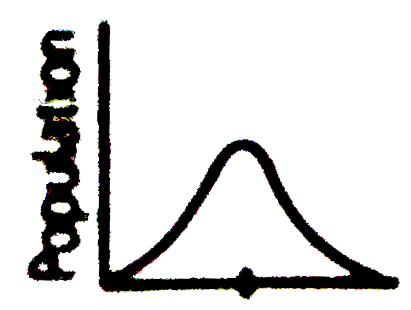 A
A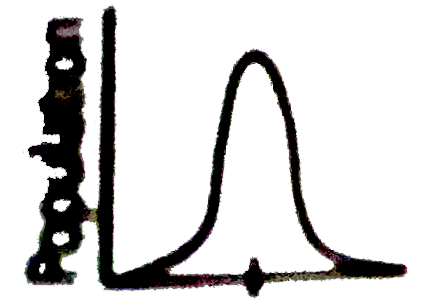 B
B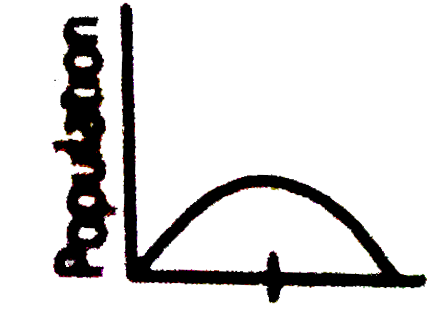 C
C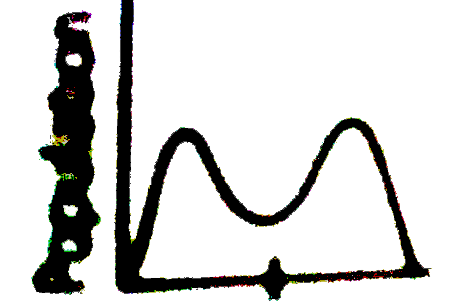 D
D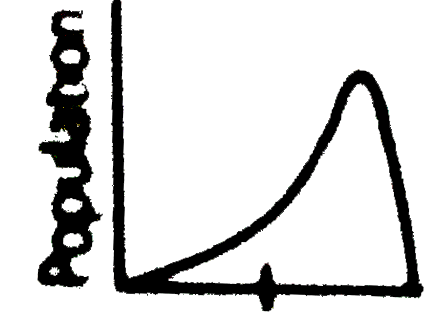
Following table summarises the differences between natality and mortality. Select the incorrect ones.
NatalityMortality(i)Natality is number of births per unit population per unit time.It is number of deaths per unit population per unit time.(ii)It adds new individuals to the population.It removes individuals from the population(iii)It increase the size of population.It decreases the size of population(iv)It increase population density.It reduces population density.(v)It is low when population size is small and high when population size is large.It is high when population size is small and low when population size is large.A(i) and (v)B(iii) and (iv)C(iv) onlyD(v) only
A population is
View SolutionPopulation is
View SolutionAssertion : The rate at which a population can be expected to grow in the future can be assessed graphically by means ofa population pyrmid.
Reason : A triangular population pyramid is characteristics of a country whose population is stable, neither growing nor shrinking.
View SolutionThe migration of gene in to a population from other population by interbreediing is called
View SolutionIf the frequncy of recessive allele in a population is 0.3 then calculate the prercentage of heterozygotes in a population.
View Solution
